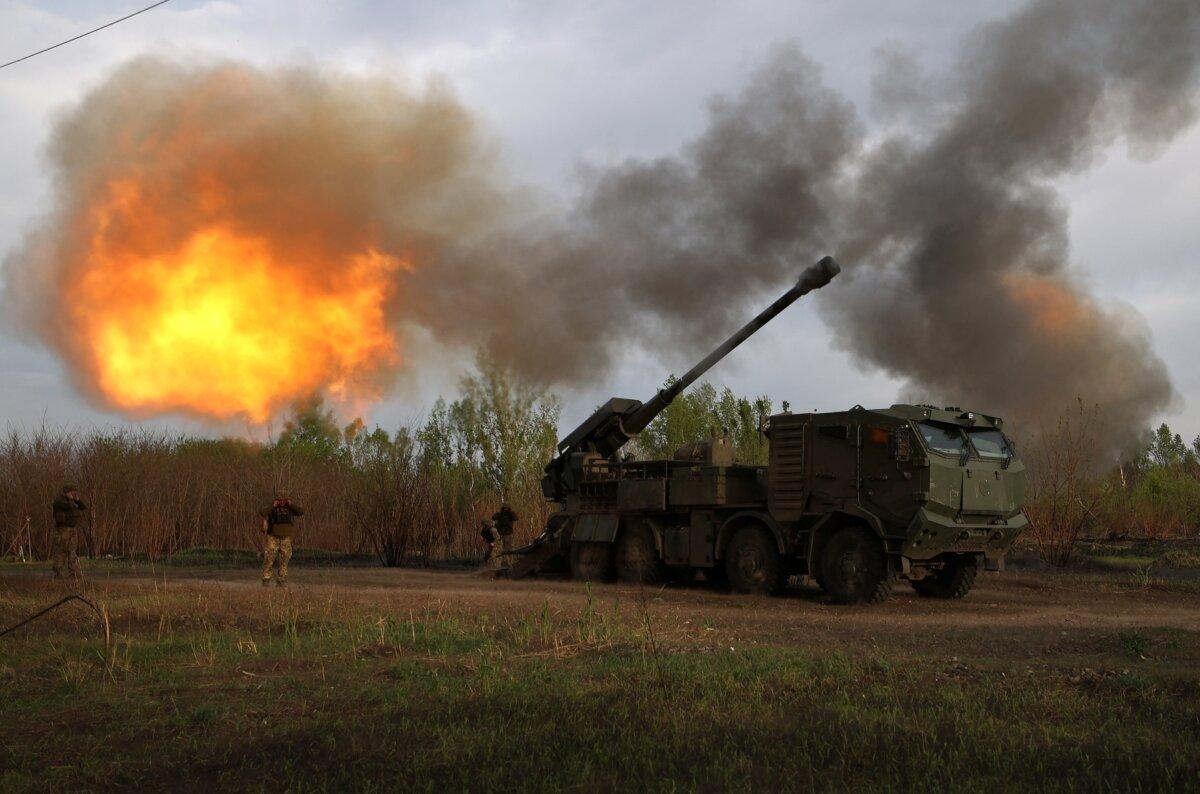Ukrainian drones set an oil refinery ablaze in Russia’s Black Sea city of Tuapse and killed two people in the western Belgorod region, according to Russia’s Ministry of Defence.
“Air defenses downed more than 100 Ukrainian drones last night, most of which were destroyed over the southern Krasnodar region and Crimea,” the Russian defense ministry said in a May 17 statement.
Russia effectively annexed Crimea in 2014 and now views the strategic Black Sea peninsula as Russian Federation territory.
“The attacks caused a fire at the Tuapse oil refinery, while drone fragments damaged an electric power substation in [the Crimean port city] Sevastopol,” the defense ministry said.
It went on to assert that at least six Ukrainian seaborne attack drones had been destroyed by Russian naval forces operating in the Black Sea.
Able to process 240,000 barrels of oil per day, Russia’s Tuapse refinery was also severely damaged in January, presumably by a Ukrainian drone attack.
Since the start of the year, Ukraine has stepped up attacks on oil refineries inside Russian territory, which have caused varying degrees of damage.
According to Kyiv, Russian oil refineries contribute to the ongoing invasion of Ukraine—now in its third year—and should be viewed as legitimate targets.
“Fewer and fewer of these types of Russian energy infrastructure are safe from potential strikes,” the official told Reuters.
On May 17, Maxar, a U.S. commercial satellite firm, said a recent Ukrainian missile strike had destroyed three warplanes at Russia’s Belbek airbase in Crimea.
Citing recently captured satellite imagery, the company claimed that the long-range strike had destroyed two MiG-31s and a Su-27 fighter jet.
Kyiv has not officially claimed responsibility for the missile strike, and Moscow hasn’t confirmed the reported damage to the airbase or its aircraft.
However, on May 15, Russia’s defense ministry said its forces had intercepted 10 U.S.-supplied long-range ATACMS missiles fired at Crimea from Ukraine.
The following day, the ministry reported a second long-range attack—involving at least five ATACMS missiles—on Russian military targets in Crimea.
In the early hours of May 17, Russia’s Belgorod region, which shares a border with northeastern Ukraine, also reportedly came under attack by Ukrainian drones.
According to Belgorod’s Moscow-appointed governor, two local residents—a woman and a young child—were killed in that attack.

Kharkiv ‘Buffer Zone’
Kyiv’s drone and missile attacks coincide with a stepped-up Russian offensive in Kharkiv, where Moscow has claimed in recent days to have captured a dozen frontline positions.On May 15, Kyiv admitted that its forces deployed near the town of Kupiansk, a key rail junction in eastern Kharkiv, had been forced to fall back to more “advantageous positions.”
The next day, Ukrainian President Volodymyr Zelenskyy visited the city of Kharkiv, the region’s capital, in an attempt to boost morale.
“The [Kharkiv] direction remains extremely difficult,” he said after meeting with military commanders. “We are strengthening our units.”
Soon after Moscow’s initial invasion of Ukraine in early 2022, Russian forces overran broad swathes of eastern Kharkiv, including Kupiansk.
They withdrew several months later, leaving Ukrainian forces in control of the region except for small pockets east of the Oskil River.
Earlier this month, Russian troops returned to Kharkiv—in force—effectively opening a new front in Ukraine’s northeast.
Notably, Kharkiv shares a lengthy border with Russia’s western Belgorod region.
In recent months, Ukraine has carried out almost daily drone and artillery attacks—from Kharkiv—on residential areas of Belgorod, drawing dire warnings from Moscow.
Earlier this week, a Ukrainian artillery shell, presumably fired from Kharkiv, killed 17 people in Belgorod, according to local officials.
Russian President Vladimir Putin has said that the aim of the Kharkiv offensive is to establish a “buffer zone” between the two warring countries.
“Ukraine is to blame for [Russia’s offensive] because it has continued to target residential areas of the border territories, including Belgorod,” he told reporters on May 17.
“I have said before that if this continues, we would have to set up a buffer zone.
“That’s what we’re doing.”

Pleading for Patriots
Kharkiv also remains subject to regular Russian missile and artillery strikes.On May 17, the Ukrainian mayor of Kharkiv city said two people had been killed and a dozen more injured by a Russian missile attack.
At a meeting in Kyiv last week with U.S. Secretary of State Antony Blinken, Mr. Zelenskyy requested two U.S.-made Patriot missile batteries for deployment in Kharkiv.
The Ukrainian leader repeated the request during his recent visit to Kharkiv city.
According to retired Lt. Col. Roman Shkurlatov, a Russian military expert, U.S.-supplied Patriot batteries won’t be enough to halt the Russian advance.
“Now the Ukrainians are issuing warnings about the potential fall of Kharkiv,” he told Russia’s TASS news agency on May 16.
“But two more Patriot systems won’t be enough to save it.”





